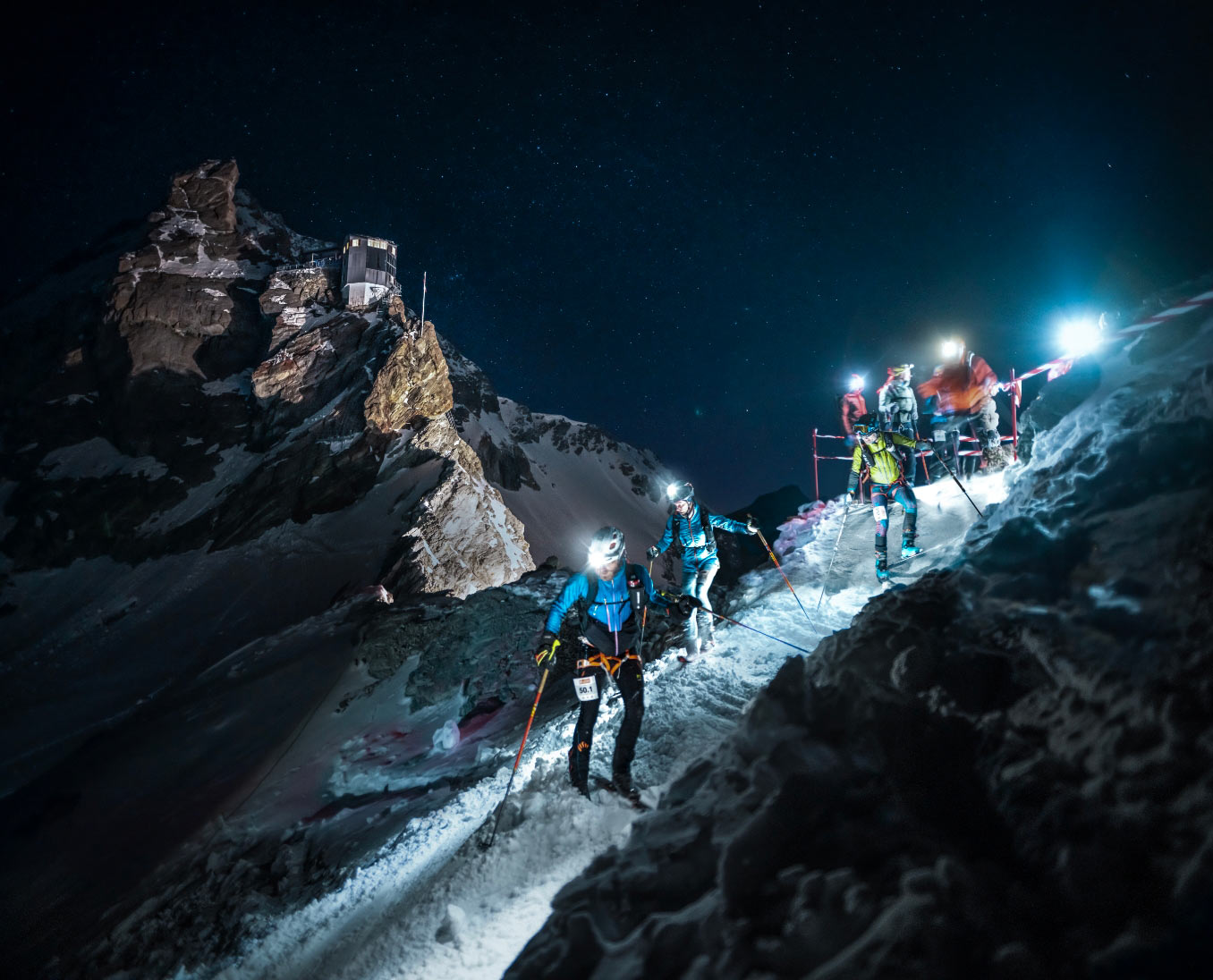
How does one get to the start? What are the time limits for each course? How should one wear one’s race number? How many refreshment points are there during the race? What equipment should I wear? What happens at the equipment check? All these questions are answered below.
The PdG command provides accommodation for competitors for the hours preceding the races from Zermatt. Additional nights in hotel rooms booked by patrollers prior to the race must be paid directly to the hotel concerned before departing from the premises. If the race is postponed by one day, the extra night is included in the registration fee.
Patrollers of races departing from Arolla can use the Evolène – Région platform to book accommodation on a “first come, first served” basis. The number of places is limited and the PdG command has no additional accommodation capacity.
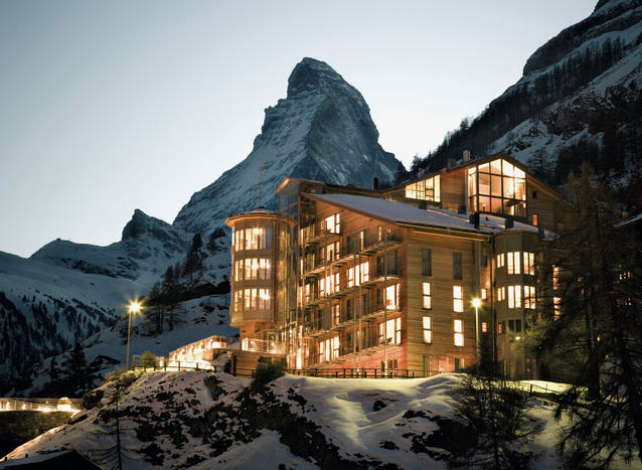
Please try as far as possible to travel to the race destinations by public transport.
Patrols that haven’t carried out their material inspection in advance must use the assembly and checkpoint in Sion (barracks).
Race day, a shuttle service will be organized between the Sion CFF station and the barracks in Sion, six hours before the first start. A limited number of parking spaces are reserved at the Sion barracks for those arriving with their own vehicles. A loading and unloading area for people not leaving their vehicles on site is also provided at the Sion barracks.
The time limits for getting to and arrival in Verbier are defined independently of the start time. All patrols failing to pass the checkpoints within the time limit will be stopped and disqualified. The patrol must follow the instructions given by the PdG command.
Races Z1 and Z2
The following time limits apply to the route from Zermatt:
| Schönbiel | Start +3h |
| Arolla – Checkpoint Z | 06:30, except elite patrols starting at 02:00 and 03:00 |
| Checkpoint race Z | 08:15 |
| La Barme | 10:30 |
| La Rosablanche | 13:00 |
| Verbier (arrival) | 17:00 |
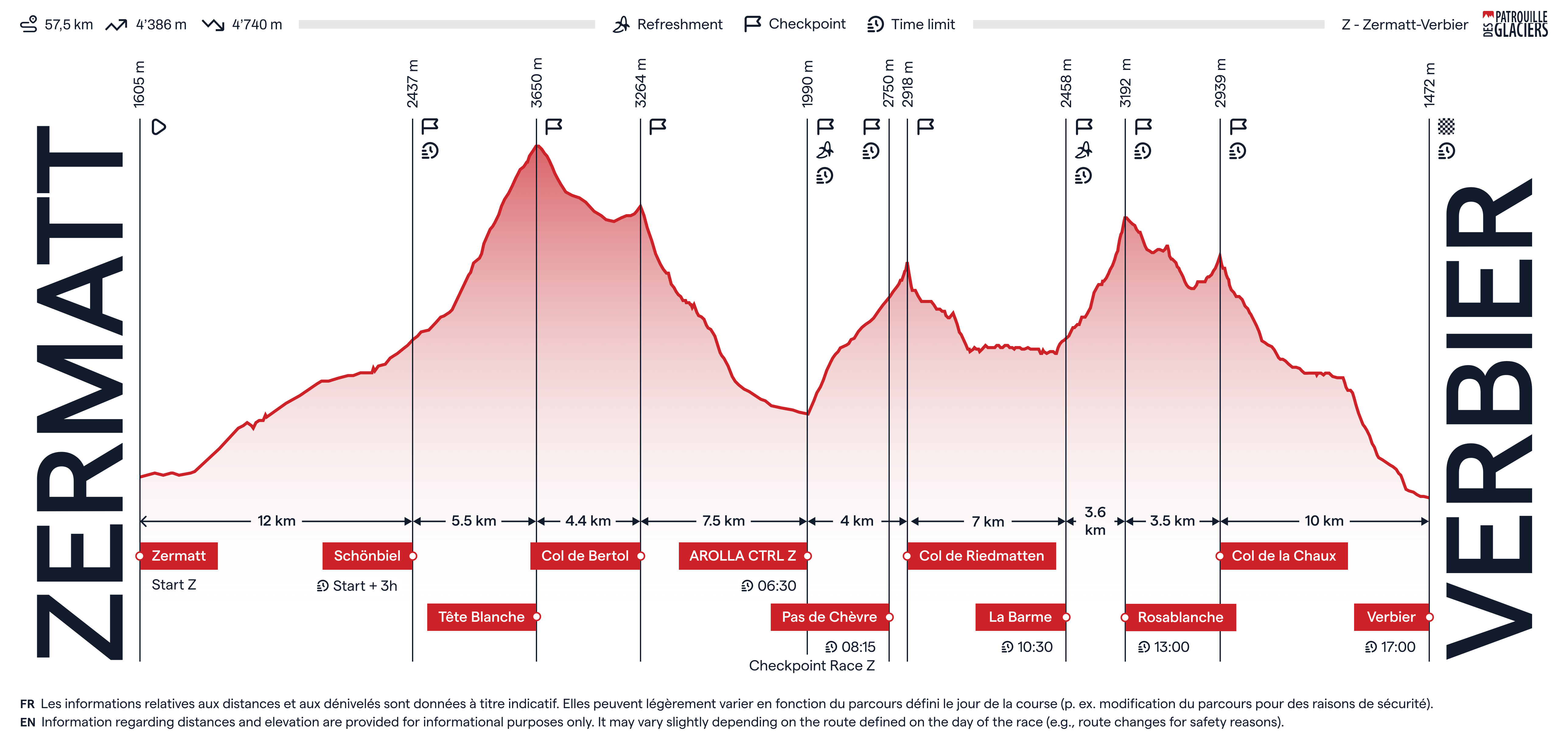
Races A1 and A2
The following time limits apply to the route starting from Arolla:
| Checkpoint race A | 08:15 |
| La Barme | 10:30 |
| La Rosablanche | 13:00 |
| Verbier (arrival) | 17:00 |
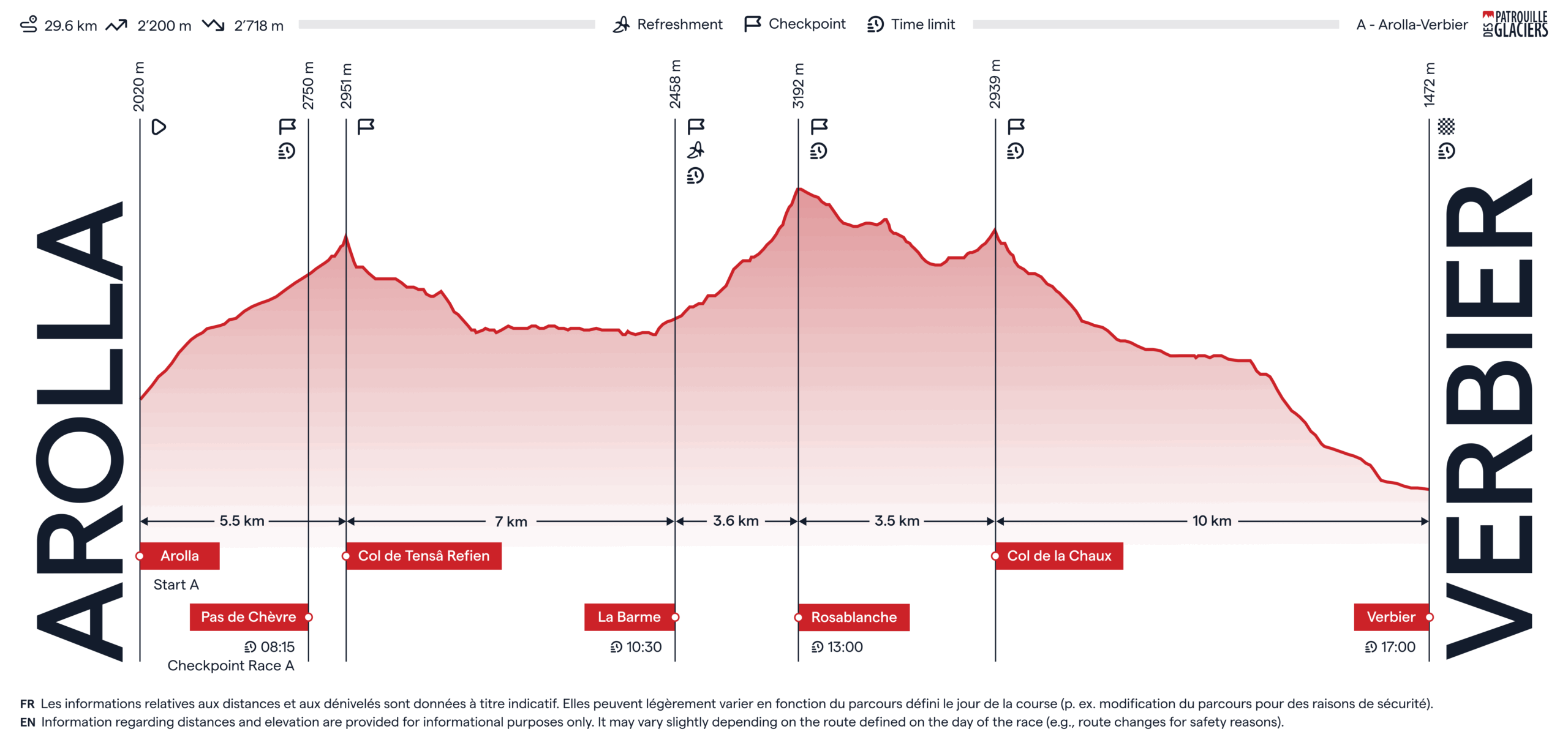
The Combes du Pas de Chèvres checkpoint must be reached within 1 hour 45 minutes of leaving Arolla. Patrols exceeding this time limit will be disqualified.
The bibs will be handed out during the preliminary and regular material checks (see Appendix 5. Section 2.1, paragraph 5) upon of presentation of the withdrawal form issued by the timekeeper.
Patrols must pass through all checkpoints in groups, with bibs visible: one on the bag, one on the helmet and one on the right thigh.
Each patroller must be in possession at all times of a valid form of identification (double-sided photocopies are allowed) to be presented on request when collecting race numbers or on the course.
At the end of the race, patrollers may keep their race numbers.
The PdG command provides refreshments to patrol members at the start, along the route and at the finish in Verbier.
Each patrol is advised to bring its own personal refreshments for during the race.
However, assistance from third parties for the personal provision of refreshments for patrollers is authorised in the defined sectors.
All relevant information can be found in Annex 7 of the Patrouille des Glaciers regulations.
Category P1 – Swiss Military Patrols (including Border Guard and Police Corps)
During the race, patrollers must wear uniforms adapted to high-altitude conditions, as well as equipment that meets the requirements of a prolonged stay at high altitude and extreme temperatures.
During the prize-giving ceremony, patrollers must wear official PdG garments. These will be distributed at the material check.
Category P2 – Military patrols
During the race, patrollers must wear their country’s official uniform, as well as high-altitude equipment that meets the requirements of a prolonged stay at high altitude and extreme temperatures.
Patrollers must wear their country’s official uniform during the prize-giving ceremony.
Category P3 and P4 – Civil patrols
During the race, patrollers must wear clothing suitable for high-altitude conditions, as well as equipment that meets the requirements of a prolonged stay at high altitude and extreme temperatures.
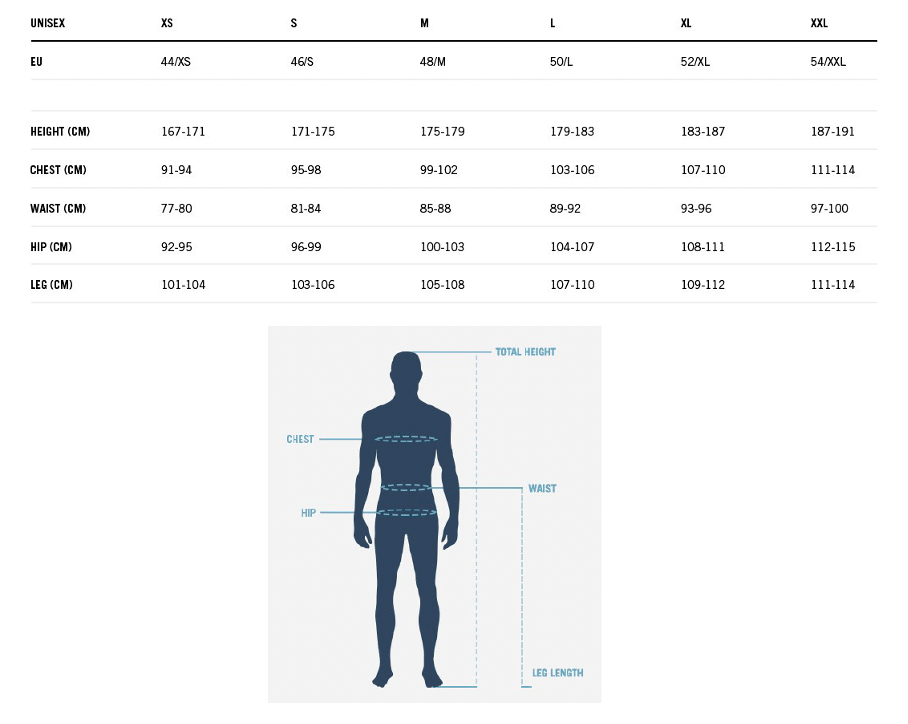
The information regarding the equipment is detailed in Appendix 5 – Equipment, materials, checks.
Patrouille des Glaciers and partner Swisscom are delighted to announce the launch of a new and improved web app for PdG 2026. The new app simply needs installing on your smartphone and you’re good to go. Whether you’re participating yourself or supporting friends and family, you can access all the latest information live on any device without additional downloads. Simply tap to start: live.pdg.ch.

